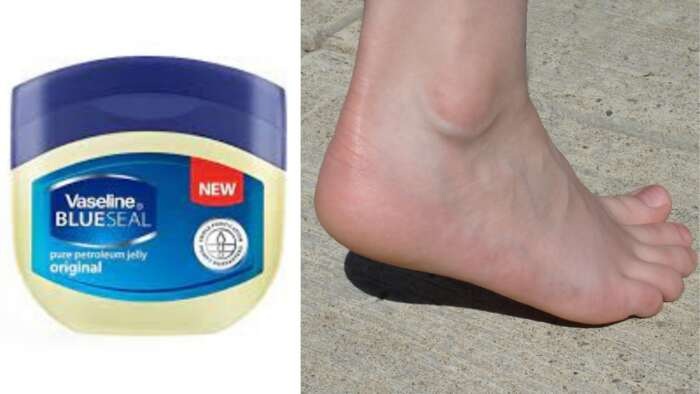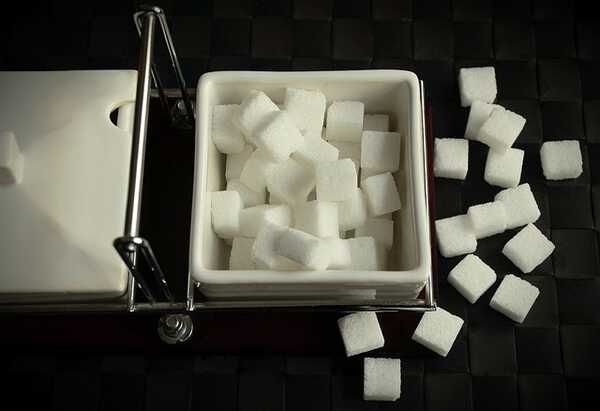
How to Heal Cracked Heels with Vaseline: Your Ultimate Guide
Cracked heels can be extremely uncomfortable, painful, and undesirable. If you’ve been suffering from this common foot problem, you’re not alone.
The good news is that there’s a simple and cost-effective solution right in your medicine cabinet – Vaseline. In this comprehensive guide, we’ll walk you through the process of healing cracked heels with Vaseline, step by step. Say goodbye to dry, rough feet, and hello to soft, smooth skin!
What Is Cracked Heels?
Cracked heels, medically known as heel fissures, are a common foot condition characterized by the development of dry, hardened, and often painful skin on the heels. These fissures occur when the skin on the heels loses moisture and elasticity, leading to the formation of visible cracks or splits.
Why Do Cracked Heels Happen?
It’s essential to understand why cracked heels happen. Cracked heels, medically known as heel fissures, are typically caused by dry skin. It’s a common condition among athletes, swimmers, walkers, and even joggers. Various factors contribute to this condition, such as:
5 Common Causes of Cracked Heels
Lack of Moisture Can Cause Cracked Heels
Insufficient moisture in the skin, often exacerbated by climate or lifestyle factors, can lead to dry and cracked heels.
Standing for Long Hours Can Cause Cracked Heels
If you spend extended periods on your feet, the pressure can cause the skin on your heels to thicken and crack.
Open Shoes or Sandals Can Cause Cracked Heels
Wearing open shoes or sandals can expose your heels to the elements, making them more susceptible to dryness and cracking.
Dehydration Can Cause Cracked Heels
Not drinking enough water can lead to overall skin dryness, including the skin on your feet.
Skin Conditions Can Cause Cracked Heels
Conditions like eczema and psoriasis can affect the skin’s ability to retain moisture, leading to cracked heels.
Now that you understand the root causes, let’s explore how to heal those cracked heels using the power of Vaseline.
What Is Dry Feet?
Dry feet, a common issue affecting many individuals, occurs when the skin on the feet lacks proper moisture, leading to dryness, flakiness, and sometimes even cracks.
The primary causes include environmental factors, such as cold weather or low humidity, and personal habits like infrequent moisturizing.
To address dry feet, a multifaceted approach is essential. Begin by regularly moisturizing the feet with a hydrating lotion or cream, paying extra attention to areas prone to dryness.
Exfoliating gently can help remove dead skin cells, promoting better absorption of moisturizers.
Wearing moisture-wicking socks and breathable shoes can also contribute to healthier, hydrated feet. In severe cases, consulting a healthcare professional may be necessary to rule out underlying conditions contributing to the dryness.
How To Heal Cracked Heels With Vaseline
The Vaseline Solution: Step by Step
Step 1: Gather Your Supplies
To begin your journey to smoother heels, you’ll need some essentials. These include Vaseline or a petroleum jelly product, a pumice stone or foot file, a foot scrub (optional), clean socks, and optionally, plastic wrap.
Step 2: Soak Your Feet
Start by filling a basin or foot spa with warm, soapy water. Soak your feet for 10-15 minutes. You can enhance the experience by adding a few drops of your favorite essential oil or a handful of Epsom salt to the water. This soaking process will soften the skin on your heels, making it easier to exfoliate later.
Step 3: Exfoliate Gently
After your feet have soaked, it’s time to exfoliate the dead and hardened skin on your heels. Use a pumice stone or foot file to gently scrub the affected areas. Be cautious not to overdo it; you want to remove the dead skin, not irritate the healthy skin underneath.
Step 4: Dry Your Feet
Once you’ve exfoliated, carefully pat your feet dry with a clean towel. Make sure they are completely dry before proceeding to the next step.
Step 5: Apply Vaseline
Now, it’s time to introduce Vaseline to the equation. Apply a generous amount of Vaseline to the cracked areas of your heels. Massage it in, ensuring you cover all the dry and cracked skin. Vaseline acts as a moisturizing and protective barrier, preventing further moisture loss.
Step 6: Cover with Socks
Put on a clean pair of cotton socks. This not only helps lock in the moisture but also prevents the Vaseline from transferring to your sheets or floor. It provides additional protection and comfort to your healing heels.
Step 7: Consider Plastic Wrap (Optional)
For a more intensive treatment, you can wrap your feet in plastic wrap before putting on the socks. This creates a more occlusive environment, allowing the Vaseline to penetrate deeper into the skin. However, this step is optional and may not be necessary for everyone.
Step 8: Leave it On Overnight
The best time to perform this treatment is before bedtime. Leaving the Vaseline on your heels overnight allows it to work its magic. The extended exposure time helps to deeply moisturize and heal the cracked skin.
Step 9: Repeat as Needed
Healing takes time, so be patient and consistent with this routine. Repeat the process every night until your cracked heels are healed. You should start noticing improvements within a few days to a week. Even after healing, it’s a good practice to continue moisturizing your feet regularly to prevent the issue from recurring.
How To Prevent Cracked Heels – Prevention is Key
Now that your cracked heels are on the road to recovery, it’s important to take steps to prevent their return. Here are some preventive measures to keep your feet in tip-top condition:
Hydration
Stay well-hydrated by drinking plenty of water. Hydration starts from the inside, and it reflects on your skin, including your feet.
Proper Footwear
Choose comfortable, well-fitting shoes that provide proper support. Avoid open shoes or sandals when you know you’ll be on your feet for extended periods.
Moisturize Regularly
After your cracked heels have healed, make foot moisturizing a routine. Apply Vaseline or a good foot cream to keep your skin soft and healthy.
Exfoliate Periodically
Regularly exfoliate your feet to remove dead skin cells and prevent the build-up that can lead to cracked heels.
Healthy Diet
A diet rich in essential fatty acids, vitamins, and minerals contributes to the overall health of your skin.
Conclusion
Healing cracked heels with Vaseline is a simple yet effective remedy that can bring relief and restore the health of your feet. By understanding the causes and following our step-by-step guide, you can take control of your foot care and enjoy the benefits of soft, smooth, and pain-free heels. Remember, prevention is just as important as treatment, so make foot care a regular part of your self-care routine.
Frequently Asked Questions (FAQs) On How To Heal Cracked Heels With Vaseline
Is Vaseline the best option for healing cracked heels?
Vaseline is an excellent option for healing cracked heels due to its moisturizing and protective properties. However, other products designed specifically for foot care can also be effective.
How long does it take to see results when using Vaseline?
You may start to see improvements within a few days to a week, but complete healing can take longer, depending on the severity of your cracked heels.
Can I use a different type of oil instead of Vaseline?
While Vaseline is effective, you can use other moisturizing oils like coconut oil, olive oil, or shea butter. Experiment to find what works best for you.
Read Also >>>>> Shea Butter Benefits For Skin, Hair And Health
Are there any medical conditions that can cause cracked heels?
Yes, conditions like diabetes and thyroid problems can contribute to dry, cracked skin on the feet. If you have an underlying medical condition, consult a healthcare professional for guidance.
How often should I repeat the Vaseline treatment for maintenance?
After your heels are healed, it’s a good practice to moisturize your feet regularly, at least a few times a week, to prevent the issue from recurring.
Can I wear open shoes while healing cracked heels?
It’s best to avoid open shoes or sandals during the healing process as they expose your feet to environmental factors that can worsen the condition.
Is it normal for my feet to tingle or feel warm after applying Vaseline?
Some tingling and warmth may be normal, especially if your skin was severely dry and dehydrated. The Vaseline is helping to restore moisture and improve blood circulation in the area. However, if you experience any discomfort or irritation, it’s essential to discontinue the treatment and consult a healthcare professional.
What if my cracked heels are extremely painful and not improving with Vaseline?
Severe cases of cracked heels may require medical attention. If your condition is extremely painful or not improving, it’s crucial to see a podiatrist or dermatologist for a thorough evaluation and appropriate treatment.
Can I use Vaseline on my feet during the day, or is it only for nighttime use?
You can use Vaseline on your feet during the day, but it might be more practical to do so at night when you can allow it to penetrate and work its magic over an extended period. Using it during the day can make your feet feel greasy, so be mindful of that.
Are there any side effects of using Vaseline for cracked heels?
Vaseline is generally safe for most people, but some individuals may be sensitive to it. If you experience any redness, itching, or other adverse reactions, discontinue use and try an alternative moisturizer. Always perform a patch test if you have concerns about allergies or sensitivities.
In conclusion, healing cracked heels with Vaseline is a tried-and-true remedy that can bring relief and restore your feet’s health.
By understanding the causes, following the step-by-step guide, and maintaining proper foot care practices, you can enjoy the benefits of smooth, pain-free heels.
Remember that everyone’s skin is different, so it’s essential to find a routine that works best for you. If your cracked heels persist or worsen, don’t hesitate to seek professional medical advice for the most appropriate treatment.
Your feet deserve the best care, and with the right approach, you can keep them soft, smooth, and comfortable.


